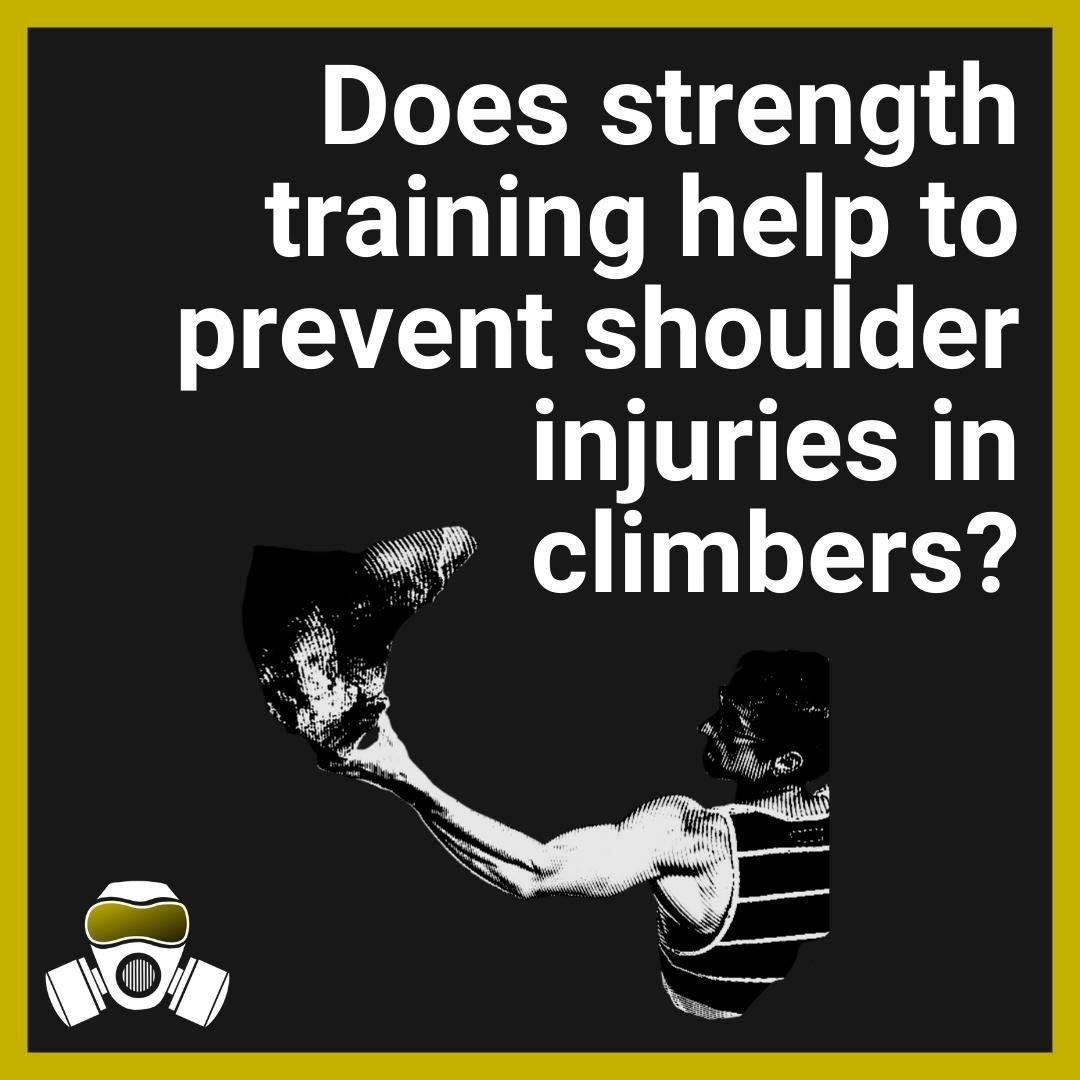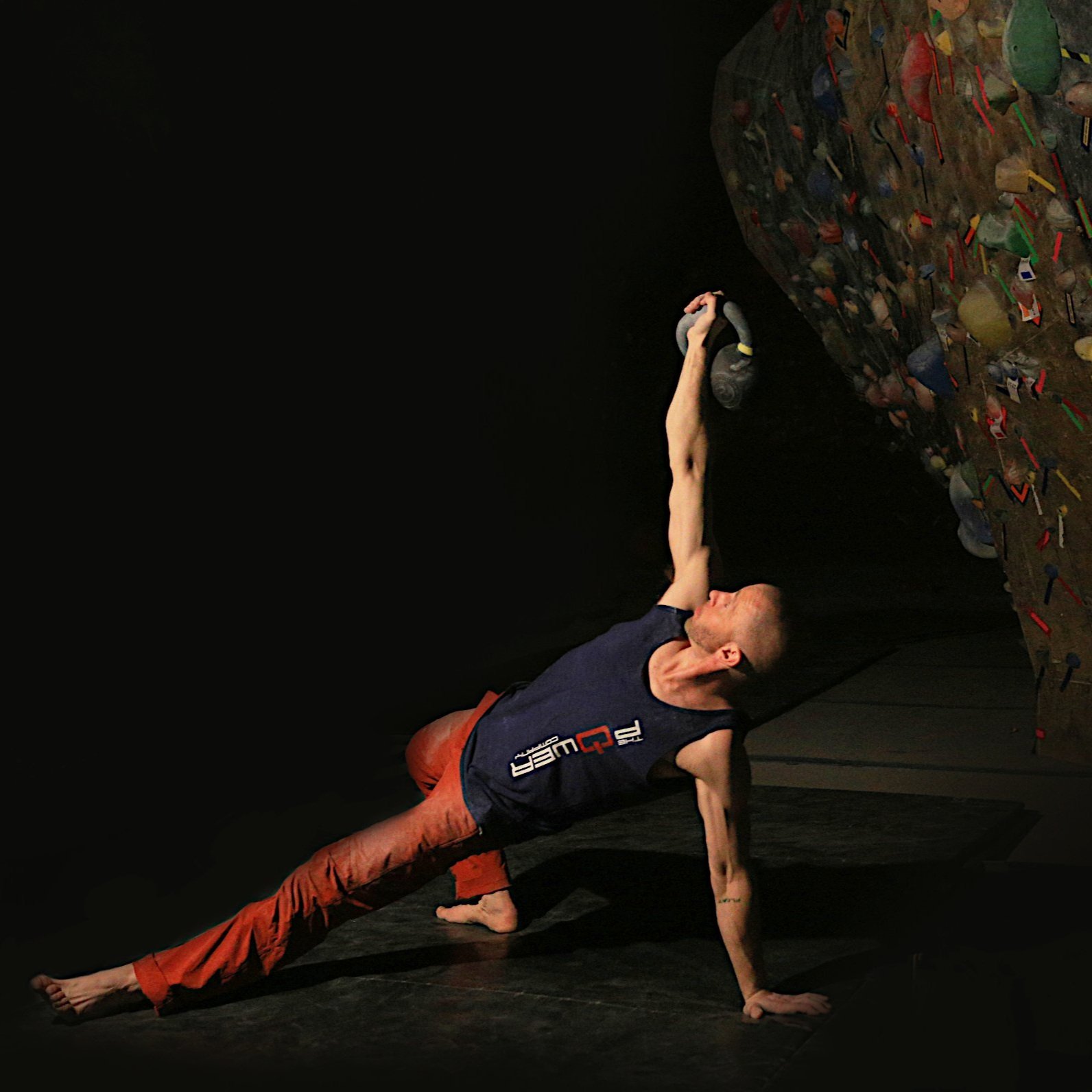Strength Training: The 4 Basic Movements You Should Be Doing.
When I was just starting my love affair with athletics and moving heavy weights, the science of how to train for sports hadn't yet trickled down to the teenage set. Despite how clueless we were, we inadvertently got one thing right; we were doing all 4 basic movements.
Squat. Hinge. Push. Pull.

As I've mentioned before, we also did millions of bicep curls, whole sessions of umpteen variations, but that's beside the point.
Now, before I go further, let me say that I think the current trend in the climbing training world toward lifting or crossfit type fitness workouts is not necessarily a good one. Could we all be more fit? Yes. Could we all stand to get stronger? Yes. Is it all we need? Not even close.
Simply put, strength training should be a key part of your training, but not your entire plan. For most of you, it shouldn't even be half of your plan. The average climber should be spending around 15% of their time lifting or on general fitness. There are obviously going to be outliers on either side of that average, and you can get a better idea of where you fit from this previous post.
So if you are one of those people who wants to lift (and should be), there are a couple of things you should know:
1. Lifting is about quality first, quantity second.
If you don't have a background in lifting, then I strongly suggest you hire a coach or trainer to at least learn proper form. I'm not going to go into proper form here, it's just beyond the scope of this post. Talk to a trainer! Always start with bodyweight and the simplest movement, perfect the movement, and progress from there, both with weight and better/more complicated movement. Not only is bad form a good way to get injured, but it's also a good way to derail any potential gains.
2. Lifting doesn't mean you'll get swole.
In fact, it's highly unlikely. If you keep it higher weight, lower reps, it becomes even more unlikely. Ditch the 3 sets of 10 that you read about in "Men's Fitness," and move some heavier weights for sets of 3-5.

Squat
You're a climber, you say, so you don't need to squat. I say you're full of shit. More likely, you don't want to squat because you suck at it, and you need to protect your fragile ego from things you suck at. Fact is, if you've ever had to high step and stand up off of it, you've squatted. If you've ever sunk down and exploded out of that position for a dyno or deadpoint, you've squatted dynamically, with power - and you can't have power without strength.
Let's keep in mind that we're talking movement here. I know you're imagining tree trunk legs with a bowing barbell across the shoulders. That's not what I mean. The movement of squatting is all over the sport of climbing. Standing up from a mantle. Absorbing a landing while bouldering. Pushing up while chimneying. It's everywhere. Do it.
Climbers should be looking to not only add weight to gain strength in the legs, back, and core, but should also look to progress to single leg movements like the pistol squat, and ultimately, a powerful exercise like TRX Pistol Jumps. This is my personal (by no means comprehensive) list of squat movement essentials for climbers, in order from least complex and least specific to more complex and more specific:
For Strength:
Step Up
Lunge
Goblet or Bearhug Squat
Hindu Squat
Rotational Lunge (particularly with the Ultimate Sandbag)
Pistol Squat
For Power:
Box Jumps
TRX Squat Jumps
Rotational Lunge Swing (particularly with the Ultimate Sandbag)
Depth Jump
TRX Single Leg (Pistol) Squat Jumps
Hinge
The hinge movement happens at the hip. On steep walls, you are very often hinged at the hip as much as (or more than) you are at the knees, and need to be strong or create momentum out of that position. The deadlift is the widely recognized king of this movement, no question. For climbers specifically, these are a few of my favorite ways to progress the movement:
For Strength:
Deadlift
Romanian Deadlift
Single Leg Deadlift
For Power:
Power Clean (I particularly like Sandbag Power Cleans)
Kettlebell Swing
One Arm Kettlebell Swing
One Arm Kettlebell Snatch
Push
Pushes can (and should) happen in several different planes. Overhead, in front of you, or pushing down. You'll find pushing in mantles, palming in a dihedral, chimneying, and many other climbing specific movements. Besides that, unless you want to be ridiculously unbalanced physically, you'll need to work the push strength to balance all the pulling you're doing.
For Strength:
Push Up
Dip
Dumbell Benchpress
Dumbell Overhead Press
Ring Pushups (and variations)
Ring Dip
For Power:
Plyo Pushups
Medicine Ball Chest Pass
Pull
What you've all been waiting for. Of course, as climbers, we have a massive reliance on our pull muscles. In nearly every situation while climbing, you'll be doing some sort of pull movement. However, not all pulls are created equal. While the obvious go to here is the pullup, it may not be the most climbing specific movement we can do. More often, you're pulling with your body somewhere between vertical and horizontal, rather than hanging straight down vertically. The good old pullup does have it's place, as even on steep rock it isn't uncommon to prepare for a big dynamic move by lowering your upper body into a vertical plane to combat a swing, in which case the pulling motion is nearly identical.
For Strength:
Pullups (and all of their variations)
Horizontal Rows
Dumbell Bent Over Rows
One Arm Bodyweight Rows (and Archer's, Turn In's, and other variations)
For Power:
Plyo Pullups
Plyo Horizontal Rows
Campus Plyo Doubles

In the next post in this series we'll talk about how to structure your strength training session, and where it fits into your climbing training.
If you're interested in learning more about strength training with kettlebells, we now have an E-book Training Plan, Kettlebells for Climbers, that is meant to work in conjunction with your climbing training. Written with strength coach Paul Corsaro, this plan can serve as a great introduction to this effective tool, or as a complete program for those who are already familiar with kettlebells. You can hear Paul and I talk more about Kettlebells on Episode 4 of the Podcast!



















Use strength to leverage every other aspect of your climbing, not replace them.